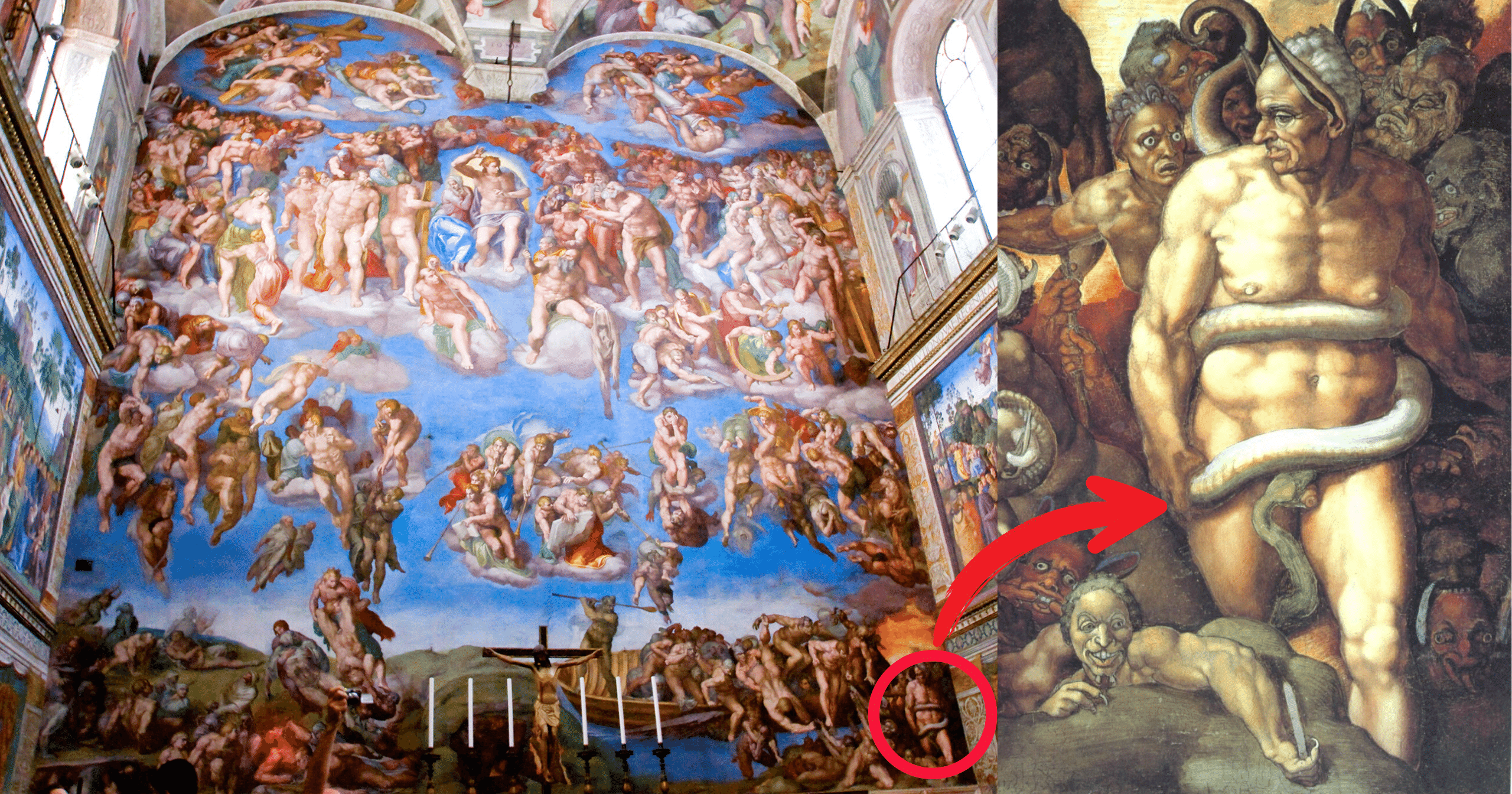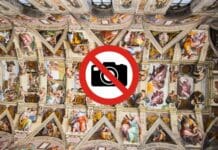Michelangelo is one of the greatest painters of all time. In his own lifetime, his contemporaries even called him “the divine one.”
Not everyone was a fan of his work, however.
Biagio da Cesena was a Papal Master of Ceremonies to Pope Paul III in the 16th century.
After Michelangelo completed The Last Judgement, Biagio told him it was more suitable for a brothel than the Sistine Chapel.
Biago called it “mostly disgraceful that in so sacred a place there should have been depicted all those nude figures, exposing themselves so shamefully.”
In response, Michelangelo decided his famous fresco actually needed one more final touch.
In the bottom right corner situated in Hell he painted the face of Biagio into Minos. He added donkey ears to indicate foolishness, and a coiled snake biting him to hide his nudity.
An excerpt from A Concise History of the Tale of Michelangelo and Biagio Da Cesena elaborates the hidden meaning behind Michelangelo’s depiction of Biagio as Minos.
“Michelangelo’s figure of Minos is derived from Dante’s Divine Comedy. In the Inferno, Minos weighs the sins of each soul and sends him or her to an appropriate circle of hell. He indicates that circle by wrapping his tail around his body the requisite number of times. In his painting, Michelangelo transforms Minos’s tail into a snake, which twice encircles Minos’s body before biting his genitals, implying that the artist condemned Biagio to the second circle of hell, where he will dwell among the lustful, those who allow carnal desire to overcome reason. Seemingly, Vasari’s Michelangelo believes that Biagio lacks good judgment and belongs in a brothel. In the artist’s eyes, Biagio, an inept critic and a hypocrite, damns himself.”
It’s said that when Biago complained to Paul III, the pope laughed and replied that his jurisdiction doesn’t extend to Hell.
“Messer Biagio, you know that I have from God power in heaven and on earth; but my authority does not extend into hell, and you must have patience if I cannot free you from there.”
And the portrait remained.
















